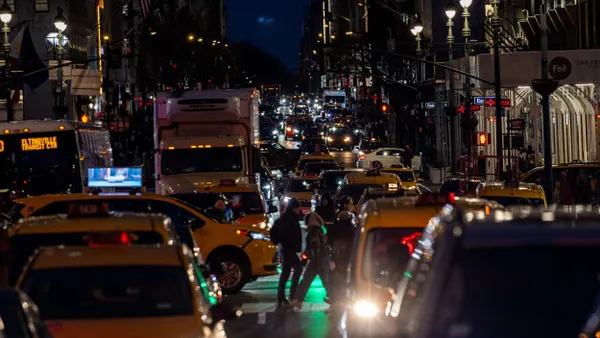Editor's Note: The following is a guest post from Rapahel Gindrat, CEO of Bestmile.
At LA CoMotion 2018, Los Angeles Department of Transportation (LADOT) General Manager Seleta Reynolds suggested that cities could better manage new mobility services like ride-hailing by positioning themselves as akin to technology platforms, enabling multiple services to operate within consistent guidelines.
"We, in cities, have tried to regulate the device, the thing that showed up, instead of thinking about how we can put ourselves in the correct seat around the business model," she said. "In Los Angeles, we've been thinking about how we can behave more like a product company."
What might that look like? "We will never be a product company, but we need to think like a product company," Reynolds said. "The way Google and Apple invite innovation on their platforms is that they have terms and services that the companies agree to and then they can sell their products in the app store. As soon as they violate those terms and conditions, they are out of the app store."
Yet a year later, some cities are partnering with ride-hailing firms to put public transport schedules on the firms' mobile apps, enabling users to view schedules and to even book rides from within the ride-hailing company’s own interface. This comes as Uber, for example, wants to become a Mobility as a Service (MaaS) platform — a one-stop-shop for any mode of transit, including its own.
While the goal of public operators might be working with these platforms to increase access public transit, there are important risks to be considered.
Allowing Uber and Lyft to be the platforms that own the "app store," using Reynolds' terminology, puts the private businesses in charge of making the rules and who is allowed on the platforms and under what terms. This is "why we can't leave transportation apps to the private sector," according to the San Francisco Bay Area Planning and Urban Research Association (SPUR).
"There's nothing precluding commercial MaaS operators from favoring their own solutions,” SPUR wrote in a blog post, and "public transportation could very well be sidelined in a commercial MaaS platforms." There are also no reasons why the MaaS platforms couldn't charge public entities for access to their customers, or from ignoring the needs of low-income neighborhoods. "Public transportation has a mandate to serve everyone, regardless of age, income, ability or access to digital tools," SPUR said.
Then there is rider data. Lyft and Uber are blatantly opaque when it comes to either sharing ride data with public entities, and with disclosing what data is sold to third parties. Ride-hailers would be collecting the information about transit use among modes, and the personal data of every user.
Cities could, as Reynolds suggested, manage the platform that defines the rules of engagement between public and private transport operators. SPUR suggests government should be "setting a vision and a framework" to ensure "MaaS delivers benefits for all rather than just a few."
The idea of the city as a platform for carefully coordinated mobility services may indeed be a framework that can facilitate the introduction and coordination of new mobility services into urban centers. Instead of regulating in reaction to the next device, or thing that shows up, the smart cities of the future can offer a more streamlined process for launching and managing new services and enabling them to work together to better move people into, out of, and within their jurisdictions.
For this model to work, Reynolds pointed out, cities will need sincere partners — that truly work together to achieve shared goals. "The trick is finding the companies that understand the meaning of partnership," which, she said, requires trust, communication, and transparency.









